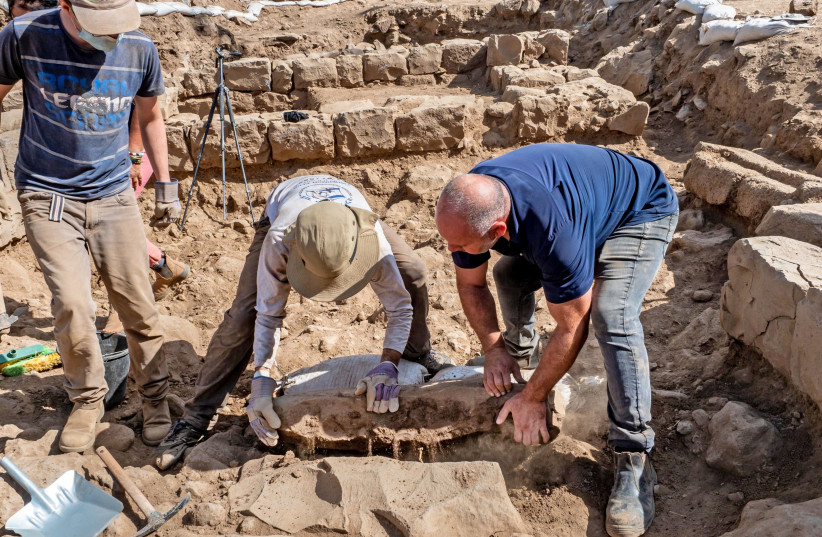by Hannah Brown
The Nafah army base was recently in the news as the setting for the acclaimed Israeli television series on the 1973 Yom Kippur War, Valley of Tears on Channel Kan 11 (Israel).

A 1,700-year-old boundary stone inscribed with the name “Kfar Nafah” in Greek was uncovered in an archaeological excavation by the Israel Antiquities Authority in the Golan Heights near the Nafah army base. The IAA found this stone during excavations ahead of the installation of a water pipeline by the Mekorot Water Company. The excavation was directed by Dina Avshalom-Gorni and Yardenna Alexandre of the IAA, with the participation of pre-military academy (mechinot) students from Maayan Baruch and Kela Alon, as well as volunteers from the community.
1700-year-old Greek inscription in Golan bears same name as village today. (Assaf Perez/Israel Antiquities Authority)
The deciphering of the inscription by Dr. Danny Syon, together with Prof. Haim Ben-David from the Kinneret Academic College, pleased researchers who realized it showed that Nafah has been the name of this site for nearly two thousand years. According to researchers, "The inscription, which mentions the name Kfar Nafah, (Nafah village) was inscribed on a boundary stone. Under the reign of the Roman Emperor Diocletian (around 300 CE), these stones were placed as the boundaries of villages, for the purpose of collecting taxes.
"This is the first boundary stone in the center of the Golan Heights, on which appears the name of a place that has been preserved to this day. Nafah was the name of the Syrian village that existed here until the Six Day War in 1967, and now Nafah is the adjacent military base." Researchers added that, "Usually, ancient names are preserved as a result of settlement continuity, which preserves ancient names from generation to generation. However, at Nafah, the ancient remains have not revealed such settlement continuity," they said. "Since the Byzantine period - about 1,500 years ago – and up to modern times, settlements are not known here, apart from briefly during the Mamluk period (13th -15th centuries CE). For this reason, the preservation of the name is intriguing and astonishing. The discovery of the boundary stone, inscribed with the name of a settlement has been preserved to this day, is a rare occurrence.”The stone, which had a secondary use as the covering of a tomb, reinforces the possibility that names of ancient settlements were preserved for many generations, even where there was not continuous settlement. The Nafah army base was recently in the news as the setting for the acclaimed Israeli television series on the 1973 Yom Kippur War, Valley of Tears on Channel Kan 11, which will eventually be shown on HBO Max internationally.
Hannah Brown
Source: https://www.jpost.com/israel-news/culture/1700-year-old-greek-inscription-in-golan-bears-same-name-as-village-today-647092
No comments:
Post a Comment